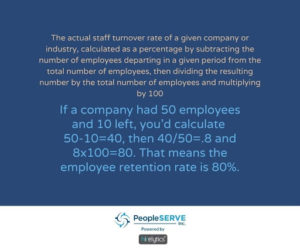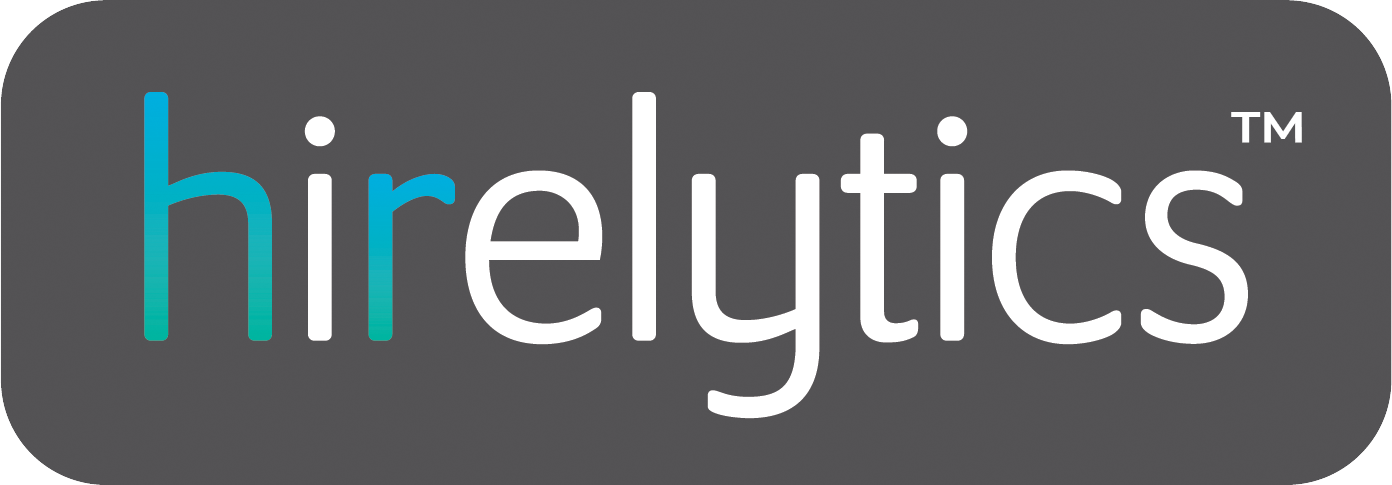A major portion of traditional HR focuses on recruiting the “right” employees. Who has the right skills? Who’s the right fit? Who gives the right answers in their interview?
But as workplace culture evolves, it’s becoming less important to hire a ready-made “perfect employee.” Instead, employers are realizing how crucial it is to invest in the teams they already have.
Employee retention saves money, improves morale, and can lead to a healthier bottom line. And that’s just the beginning.
What is employee retention — and why does it matter?
Employee retention can refer to one of two things:
1. The actual staff turnover rate of a given company or industry, calculated as a percentage by subtracting the number of employees departing in a given period from the total number of employees, then dividing the resulting number by the total number of employees and multiplying by 100 (ex: if a company had 50 employees and 10 left, you’d calculate 50-10=40, then 40/50=.8 and 8×100=80. That means the employee retention rate is 80%.)

2. The strategies used to retain employees. Some companies have employee retention programs or launch employee retention initiatives to stem losses already incurred (if perhaps employees are already leaving at a higher than usual rate) or to prevent future losses and strengthen the company.
The goal of employee retention initiatives is to reduce turnover and keep the highest-performing employees on the payroll for as long as possible. These programs should be proactive, not reactive; spotting employee discontent and the signs of disengagement early on makes it easier to adjust policies and find ways to improve employee morale. In many ways, retention starts with recognition.
The truth about retention and your bottom line
Ever heard the phrase, “You’re only as strong as your weakest link?” Keeping productive employees from leaving is good business. You want strong employees to lead and inspire your team — that’s why it’s smart HR to try to hire from within and to respect your employees and their ideas.
But one of the biggest reasons companies are turning their attention to retention is because of the financial component. The exact cost of replacing an employee differs from study to study, but experts agree that it’s expensive. One study found that hiring a replacement for a departing employee can cost as much as 33% of that employee’s salary. So, for every $45,000 employee a company loses, they’re spending an estimated $15,000 finding that employee’s replacement.
Where does all that money go?
Hiring recruiters or funding an HR department costs money, as does placing job ads, running background checks, interviewing candidates, shelling out for incentives like signing bonuses and relocation expenses, training new employees, and so on. There are also indirect costs, such as the dip in productivity that often occurs when an employee leaves, and lost revenue that might result from diverting management to the interview and training processes.
And as you’re balancing all that, you need to keep an eye on the rest of your team. For every empty desk you have, there’s work someone else has to take on. That kind of burden can easily create resentment, lead to burn out, and put you at greater risk of more employee departures.
Expert tactics for improving employee retention
The best way to protect your company is to find ways to hire smart, keep employees happy, and replace the employees you lose as quickly as possible while still ensuring the people you on board are a good fit.
- Understand what employees expect from the modern workplace. Today’s workers want respect, flexibility, and opportunity.
- Create a company culture that’s comfortable, desirable, and meets the needs of modern employees. Emphasize work-life balance by allowing for time off when family responsibilities demand extra attention.
- Work toward a more diverse and inclusive workplace. Diversity refers to building a team that reflects the differences seen in society, meaning you recruit people of varying socioeconomic backgrounds, religions, races, ethnicities, genders, sexual orientations, and so on.
- Use benefits, compensation packages, and other work-related perks to make your company more enticing than the competition. Money isn’t the only way modern employees want to be rewarded for a job well done. Health insurance, retirement accounts, paid vacation, casual Fridays, catered breakfasts every Monday morning, free gym memberships, company laptops — all these things help bolster employee satisfaction and make your staff want to stay put.
Need help with recruitment and retention? Reach out to the PeopleSERVE team to find talent that fits your company’s unique needs.


